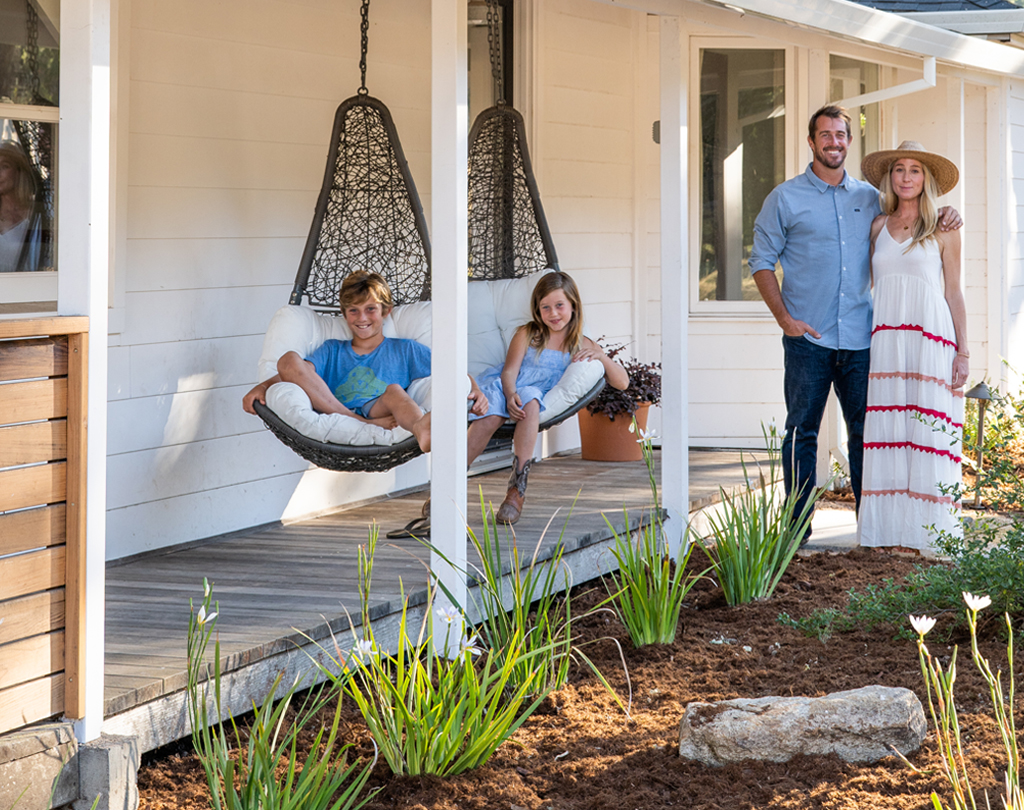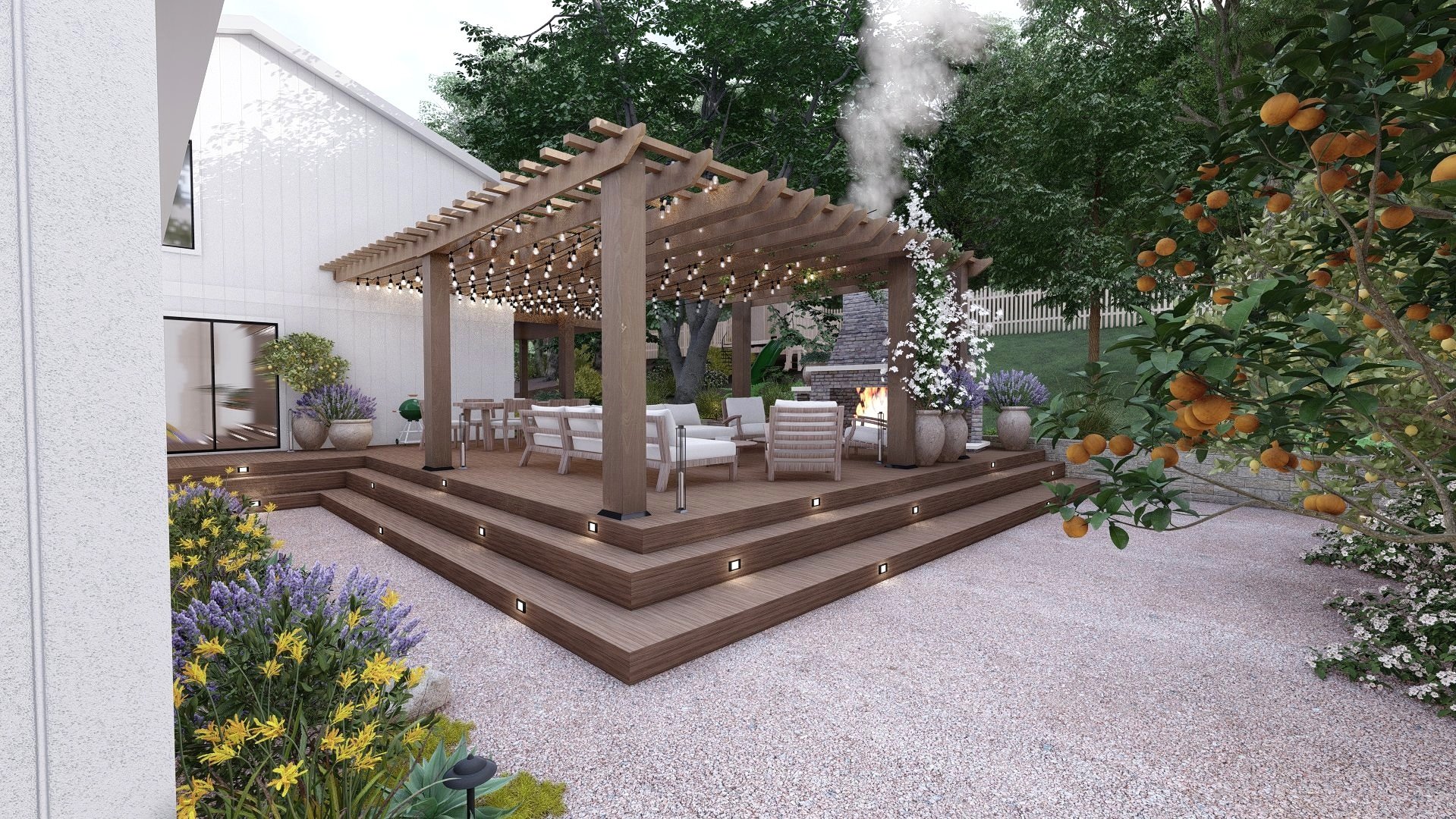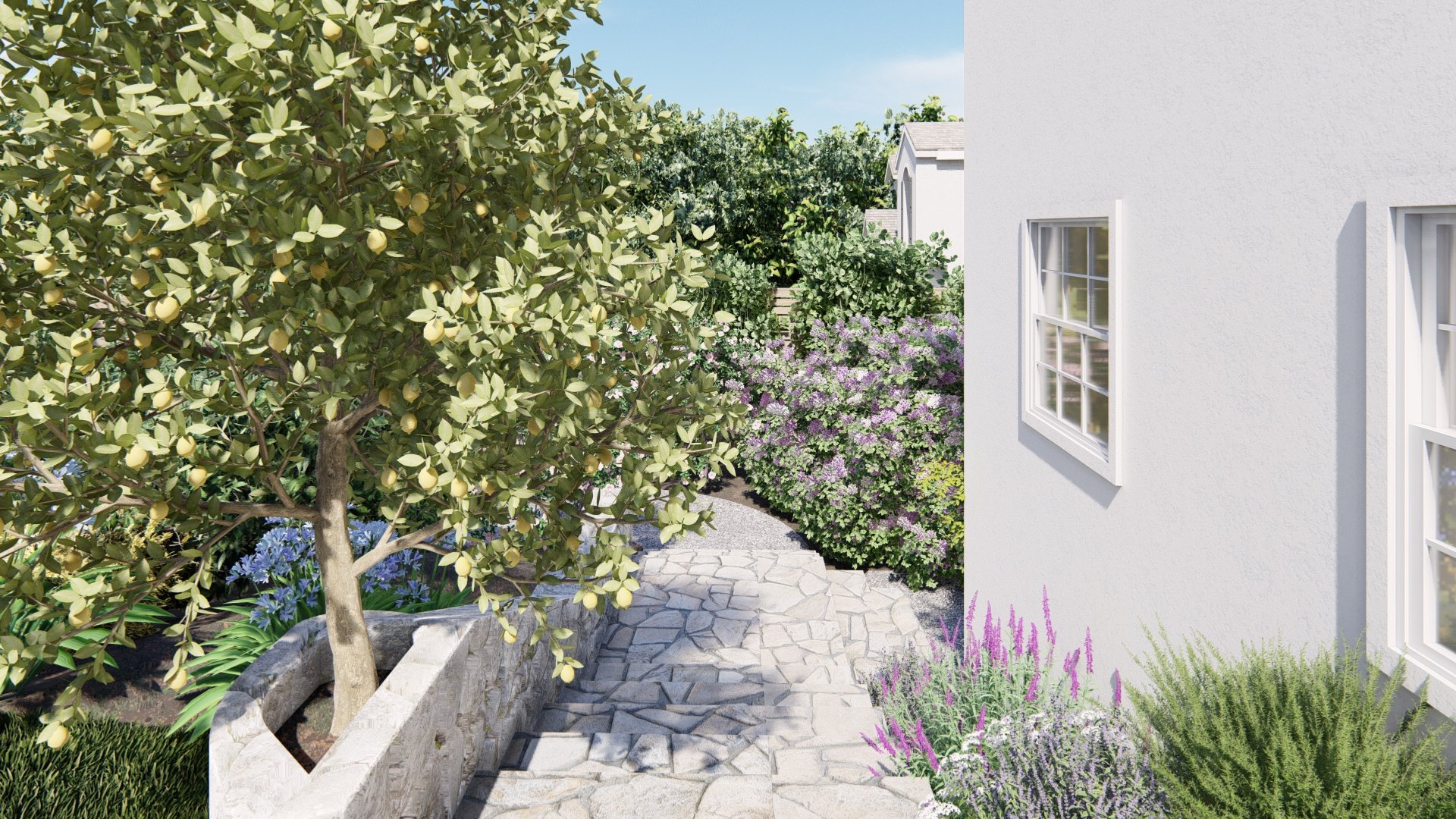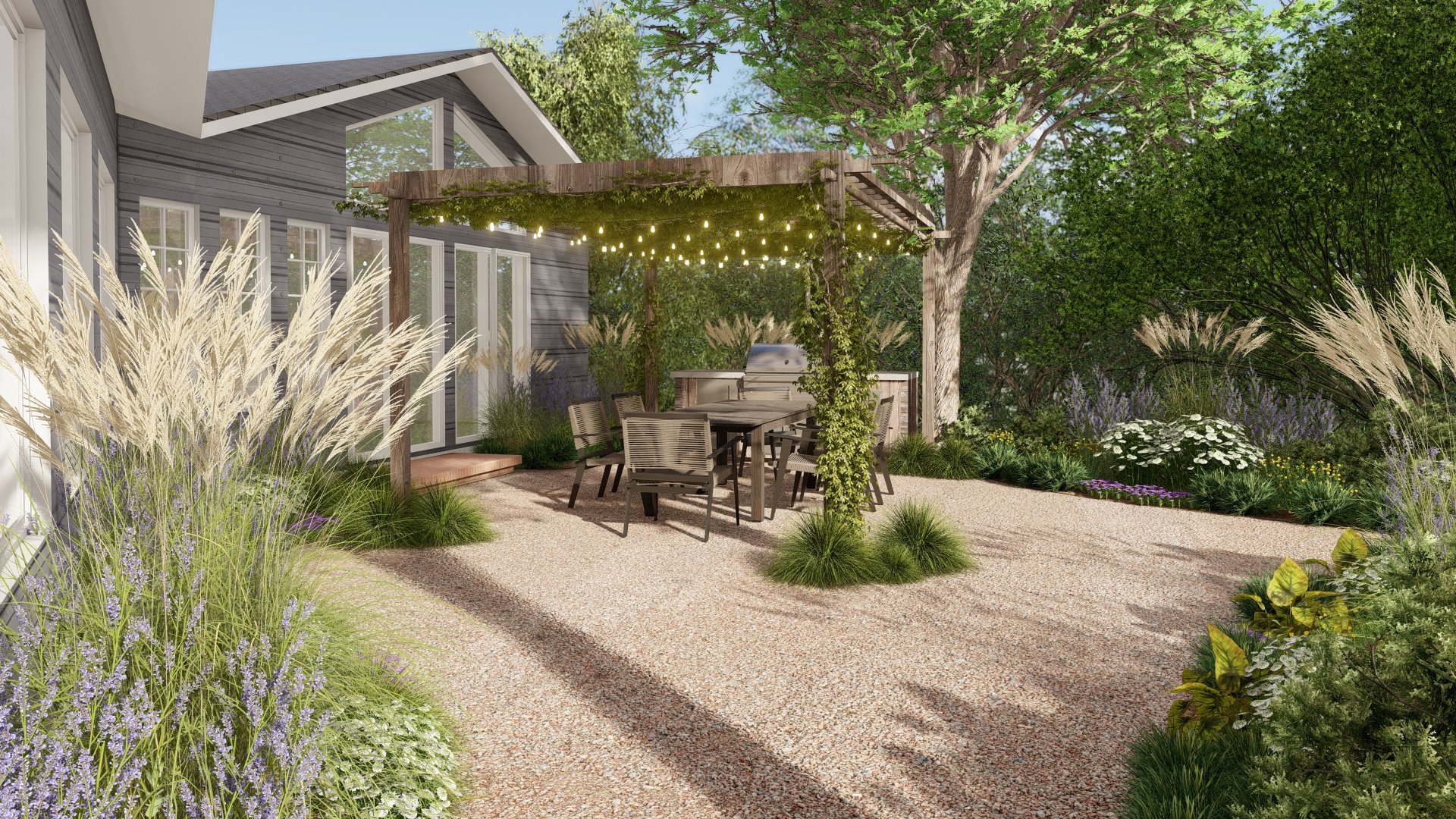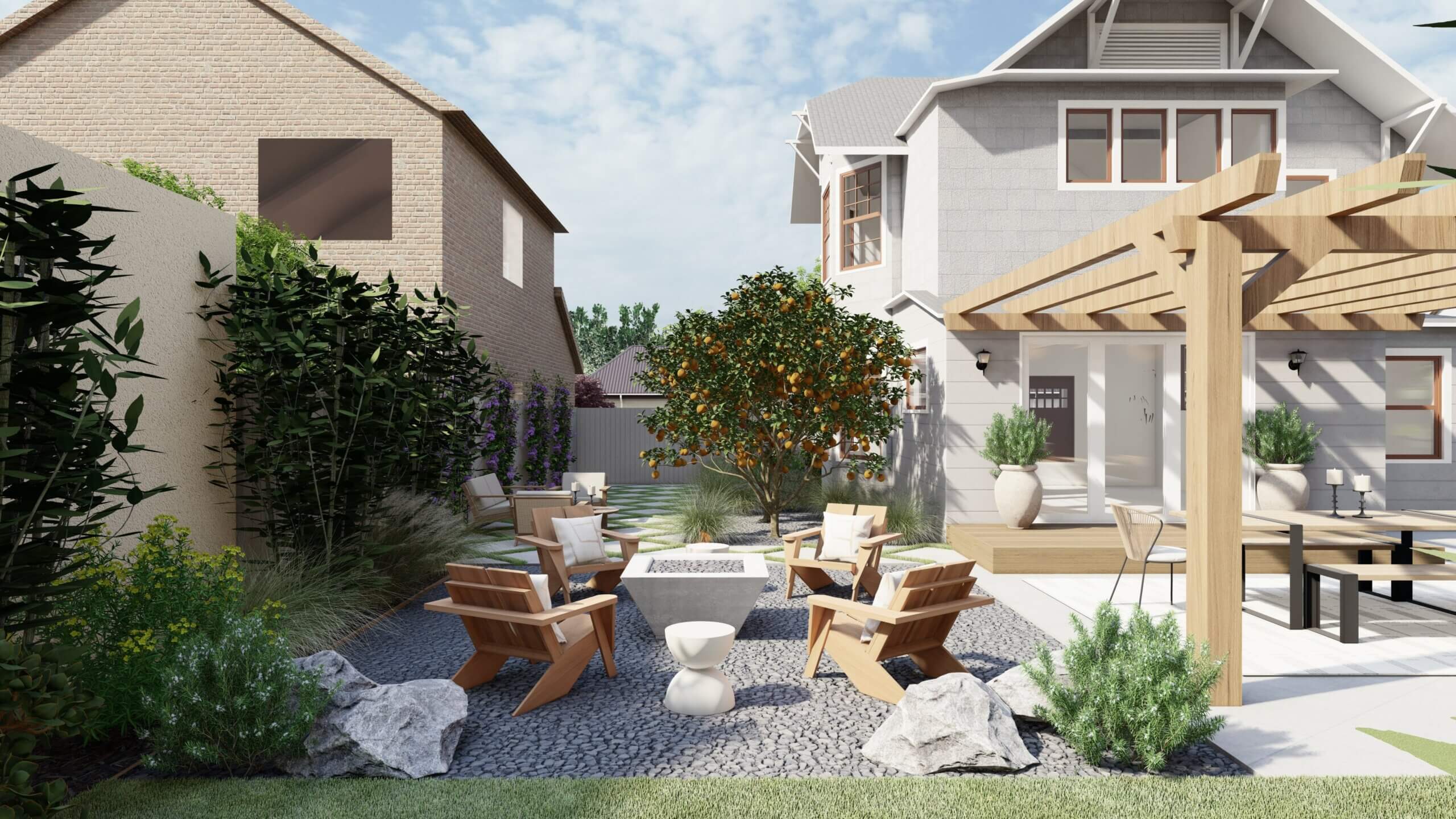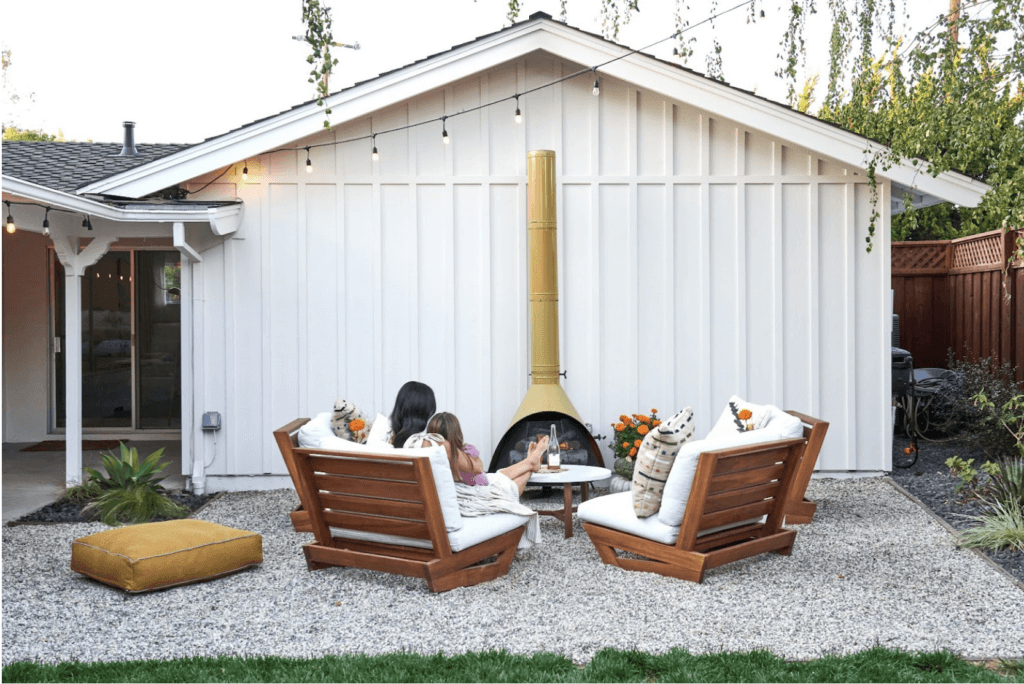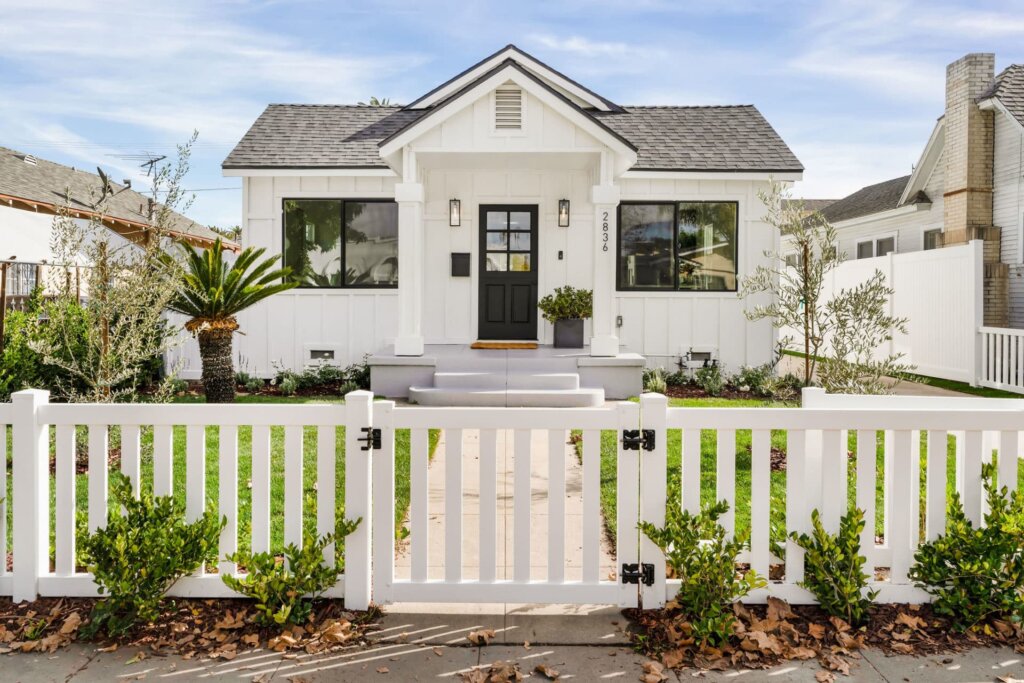
Image via Saga Magazine
Prized for their fanciful looks, cottage gardens were actually a practical invention.
The defining characteristics of this garden style—dense planting, lots of different species, flowers mixed with edible plants—are said to have been developed to maximize food production. More flowers meant more bees to pollinate food crops. Beauty was a happy byproduct of necessity.
Traditional in origin and informal in appearance, cottage gardens today are enjoying a well-deserved return to popularity. They’re also evolving in fun new directions.
Get started on your cottage garden by Yardzen today!
A rich layering of flowers, including several pollinator-loving, native plants and evergreen shrubs in this Yardzen yard.
What’s in a cottage garden?
Plants dominate cottage gardens. You’ll see them climbing up walls and arbors, leaning into paths, and squeezing into every inch of oversized beds. The overall impression is abundant, whimsical, and a little wild.
The designer’s rule of thumb to keep plants at or below waist height along path and patio edges still applies, but you can get away with plants encroaching on people-spaces a lot more in cottage designs. It’s almost expected.
Materials in cottage gardens are humble. Gravel, old brick, and stone are popular for their natural look. Whatever the material, hardscape is routinely swaddled in green. Planting pops up between pavers, slips across path edges, and spills over walls at every opportunity.
You won’t find any of the geometry, pattern, or axial arrangements of more formal garden styles. Rather, lines in cottage gardens meander gracefully. This creates fun conceal-and-reveal opportunities as paths wend around densely planted curves.
A modern take on the cottage garden for a Yardzen client, including abundant blooms, gravel, stone, edibles, and functional outdoor space.
ALL the Flowers
Flowers of all colors, shapes, and sizes are the stars of cottage gardens. Floral displays in cottage gardens change not only with the season, but over the years as well.
While hollyhock, cosmos, and foxgloves are common in English cottage gardens, gardens stateside feature regional pollinator-friendly species, many with broad native ranges. North American staples like yarrow, goldenrod, Salvia, Allium, Penstemon, and Joe-Pye weed are all popular choices.
For immediate color, quick-blooming flowers, many of them annuals, are often used to hold down the show until longer-lived perennial species reach maturity. California poppies make for a solid intro act for gardens throughout the West, blooming quickly, commanding attention for a year or two, then clearing out for longer-lived perennials to take over.
Year-round interest in this Yardzen yard! A mix of warm-season blooms, like lavender, and evergreen trees like olive, and vines,
Year-Round Interest
When choosing flowers, bloom timing is a key consideration. The goal: make sure something is always in bloom for as much of the year as possible.
Shorten the bloomless cold season by including early-blooming species like Narcissus, Crocus, and Ivory Prince hellebore, along with the fabulous redbud tree, which develops delicate pink blooms directly on bare branches (redbuds are also excellent habitat trees).
Incorporating evergreens and plants with winter interest also helps to keep things lively when flowers are absent. Look for species with colorful foliage, structural branching, or attractive bark. The glowing red branches of the red twig dogwood make it a classic winter focal point.
A lemon tree mingles with stone and flowering, pollinator-loving shrubs in this Yardzen yard.
Other Plants Too!
Cottage gardens blend smaller shrubs and non-flowering perennials among flowering species to establish a layered, verdant backdrop. This is where you’ll find herbs and fruit-bearing bushes mixed among ornamental species, balancing productivity with aesthetic effect.
Taller shrubs and small trees (including fruit trees) provide structural punctuation and pockets of dappled shade. Using trees also adds variety to light conditions, creating diverse site conditions that in turn invite a broader diversity of plant species.
Ornamental grasses, while less common, can be artfully worked into cottage gardens as well. Grasses look particularly at home in dry climate gardens.
Species lists run long in cottage gardens. Where grassland-inspired designs plant fewer species in larger masses, cottage gardens take the opposite approach, planting just a few individuals of many different species. The result is a highly diverse and intermixed planting design that begs to be experienced up close.
Are cottage gardens sustainable?
A cottage garden’s sustainability comes down to plant selection.
By choosing native or climate-adapted plants that require minimal additional irrigation, you can develop a cottage garden that will be water-wise despite its lushness. In fact, dense planting acts like mulch, helping soil to retain moisture by insulating it from heat and light, making your irrigation water go further.
With unrivaled species diversity, cottage gardens have more potential than any other garden style to support biodiversity. While some introduced species like lavender and Russian sage are fabulous at attracting bees, nothing rivals native species for offering habitat to pollinators (along with a host of other beneficial insects). By planting a robust mix of habitat-rich species, predominantly natives, you can make your cottage garden into a veritable habitat oasis.
This abundant Yardzen front yard is actually incredibly easy-to-maintain because of the application of several cottage garden principles.
Are cottage gardens hard to maintain?
It can be hard to believe, but cottage gardens actually offer a few maintenance advantages. Shaggy by design, you can skip fussy pruning and simply let plants grow. Cutting back some perennials can boost blooms and keep plants from getting woody, but laborious trimming is generally unnecessary.
Weeding requirements are also minimal at most. Dense planting creates stiff competition and limited real estate for weeds in a cottage garden. In some cases, flowering volunteer species can actually become a welcome addition to a cottage planting bed.
When species with similar light, water, and soil preferences are grouped together in a cottage design, they can be tended as a community, and require little individual attention. Selecting natives from similar ecosystems is a great place to start when assembling a community-based planting design.
With fewer individuals of any one species, plant failure has a limited impact in a cottage garden. It’s easy to replace poor-performing species when you only need to swap out a handful of them.
The “New Cottage Garden” for a Yardzen client, including gravel, whimsical lights, abundant blooms, and year-round interest.
The New Cottage Garden
The low stakes for failure in cottage gardens give designers exceptional freedom to experiment. The style welcomes a playful approach, and begs to evolve over the years, with new plants substituting those that have run their course. A designer can get a client started, but clients should feel empowered to continue their garden’s evolution by blending in new species over time.
Today, cottage gardens are taking on fun new expressions, driven by a growing emphasis on climate-adapted and native planting. Native plants project a signature look that evokes their regional landscape, be it prairie grasses in the Midwest, coniferous trees in the Northwest, maples in New England, or woodland shrubs in California.
Blending proven-winner natives into cottage gardens adds a dash of regional character, linking the garden to the regional landscape while maintaining that distinct cottage feel. Not all cottage gardens should look the same, and natives are there to help us keep things unique, not to mention more sustainable.
Featured Articles
How an Interior Designer Created “Outdoor Rooms” in Her Yardzen Yard

The Best Outdoor Cold Plunge Tubs & Ice Baths in 2024 (Chosen by Our Client...

Our Dreamiest Plunge Pool Yard Designs
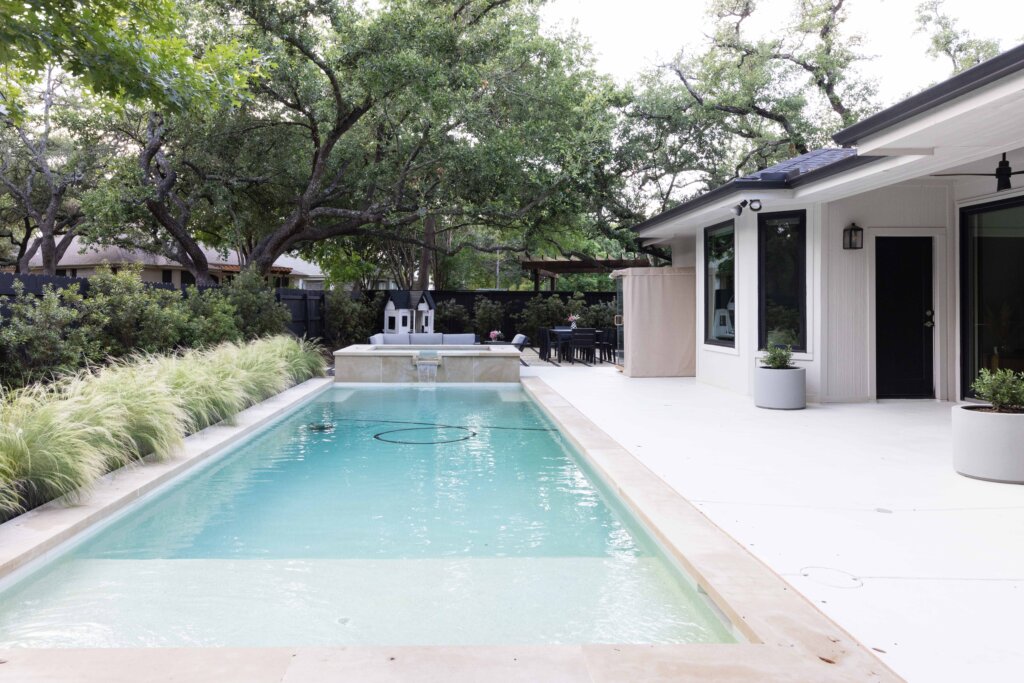
Our Favorite No-Grass Front Yard Ideas

